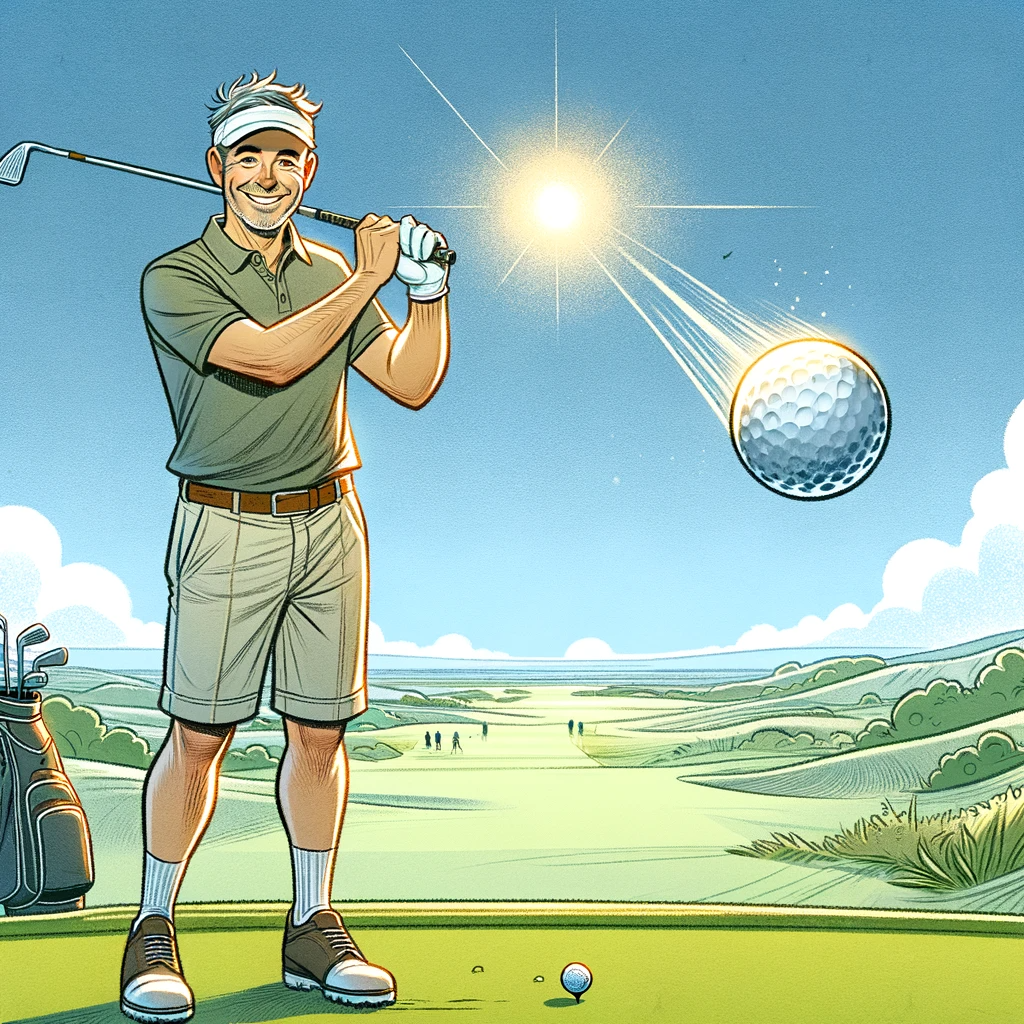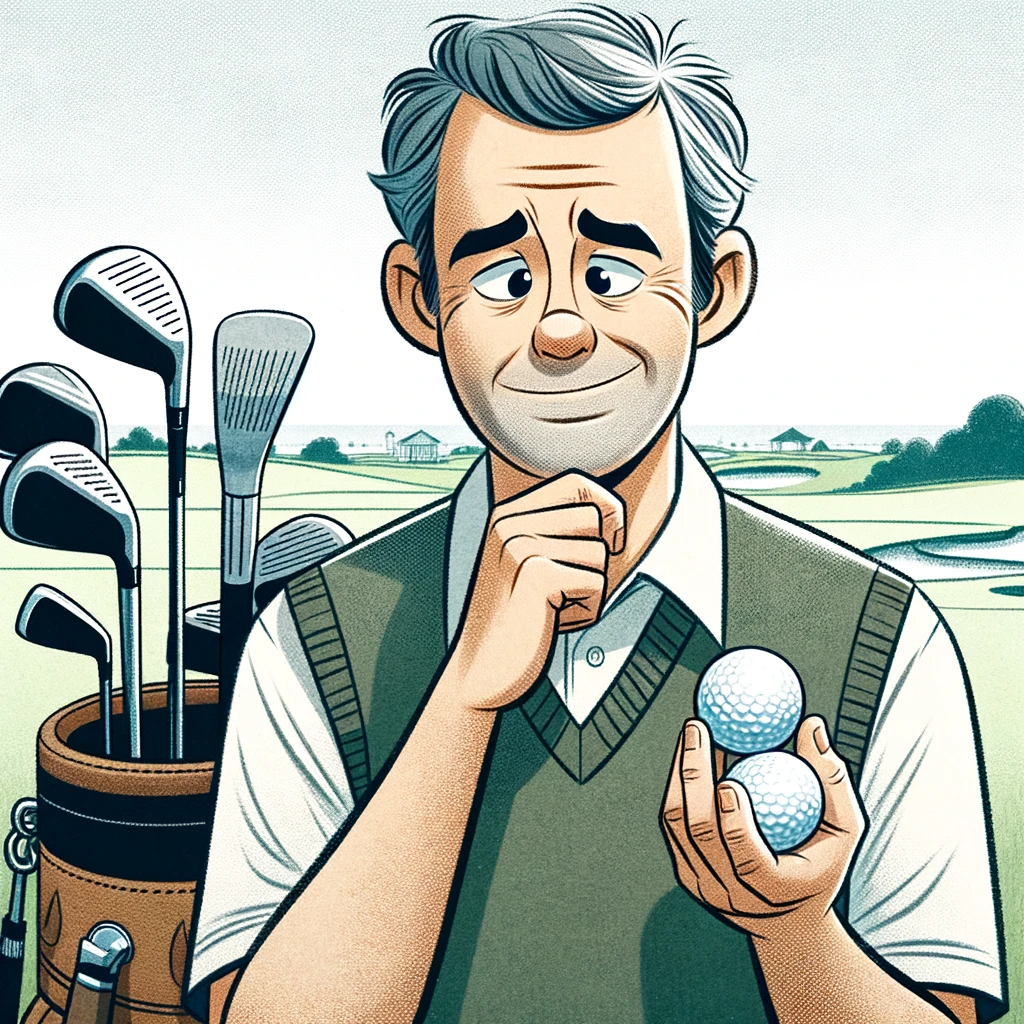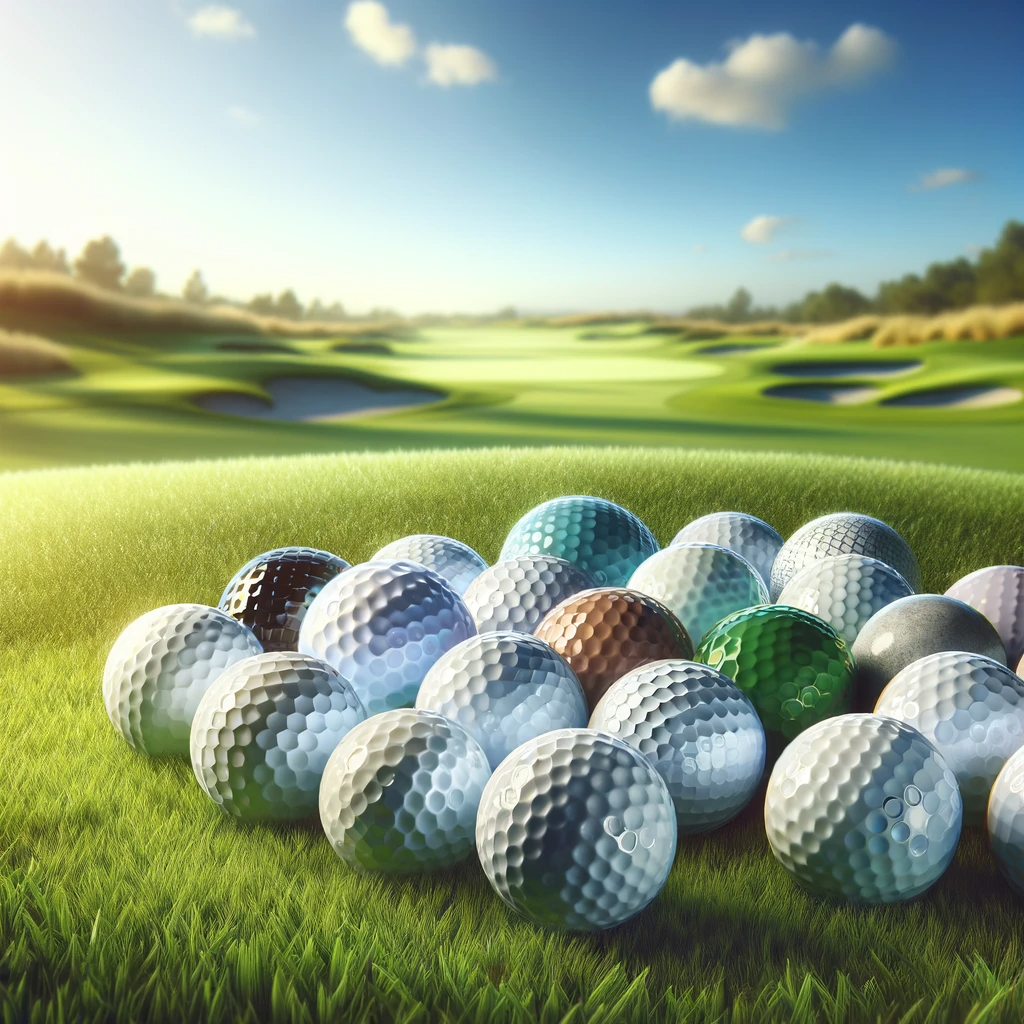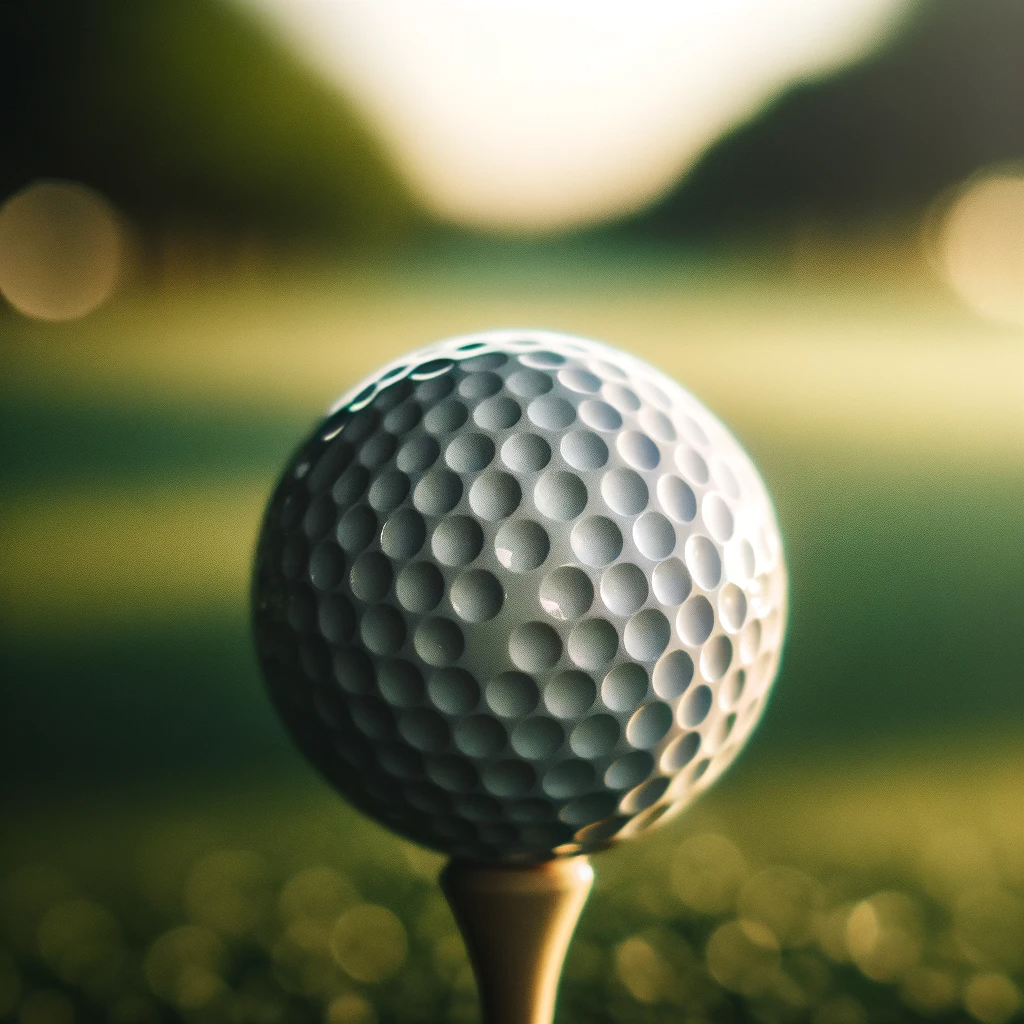- Home
- Equipment
- Golf Balls
- Which Golf Balls Are Best for Distance
Best Golf Balls for Distance: Maximize Your Drive
As a golfer, you know the rush of watching your ball soar across the fairway, cutting through the air with precision and power. But if you're struggling to find that extra edge in distance, the answer might just lie in the golf ball you choose. Our guide dives into the characteristics of golf balls that maximize distance, ensuring your selection complements your swing speed and style. With key takeaways and a handy FAQ section, even if you're in a hurry, you'll find actionable advice to transform your game. So, are you ready to leave your old distances behind and set new personal bests?
Have you ever stood on the tee, unleashed a swing you're proud of, and yet watched your ball fall frustratingly short of your companions'? It's a common plight, but the problem might not be in your swing—it could be the ball. As a golfer who's been through the wringer trying to add yards to my drives, I've discovered that not all golf balls are created equal. The quest for the perfect ball to boost distance can be as nerve-shattering as a downhill putt in a gusty wind. But fear not, because I've poured my heart into demystifying this for you.
The construction of a golf ball can be as complex as the game itself, with layers, cores, and covers all playing a pivotal role in how far it will soar. I've sifted through the mumbo-jumbo and tapped into insider information to bring you the cold, hard facts. From the bone-crunching core to the sleek aerodynamics of the dimple pattern, every element has a part to play. I've been that golfer, the one who's tried every brand spanking new ball that promised to be the secret weapon to my drives, only to end up with the same old results. But through trial, error, and a bit of science, I've cracked the code.
Now, I stand on the tee with a ball that's an untapped resource, ready to unleash a drive that's not just longer, but wickedly effective. The transformation wasn't overnight, but the journey was worth every penny. In this guide, I'll share with you the insights and strategies that have not only changed my game but could revolutionize yours too. We'll explore the hidden assets within each ball that can lead to that jaw-dropping power we all crave. So, if you're ready to dominate the fairways and leave your golf buddies in awe, let's dive into the world of golf balls and unlock the secrets to maximizing distance.
Are you ready to tee up and transform your game? Let's get started.
 Unleash the Power: The Quest for the Longest Drive Begins Here
Unleash the Power: The Quest for the Longest Drive Begins HereWhat Are the Characteristics of Golf Balls That Maximize Distance?
Let me take you back to a time when I was just like you, searching for that elusive extra yardage off the tee. I remember standing on the 18th hole, with a wide fairway before me, feeling the pressure of needing a good drive to win the round. I had tried different swings, clubs, and techniques, but it was a change in the ball that finally gave me that sweet, nerve-shattering boost in distance. So, what makes a golf ball a distance demon? Let's break it down:
Core Construction:
- Compression: A lower compression core means the ball will deform more upon impact and then snap back, giving you that "slingshot" effect. It's like the ball is saying, "I've got your back," as it rockets off the clubface.
- Material: Most distance balls feature a polybutadiene rubber core, which is the engine of the golf ball. It's the difference between a putt-putt car and a muscle car under the hood.
Dimple Pattern:
- Symmetry and Depth: A uniform dimple pattern reduces drag and enhances lift. It's like adding wings to your ball, letting it cut through the air like a hot knife through butter.
- Size Variations: Some distance balls use a mix of dimple sizes to fine-tune flight characteristics, ensuring that your ball doesn't just go long but also straight, avoiding that dreaded slice or hook.
Cover Material:
- Surlyn® vs. Urethane: Surlyn® covers are harder and contribute to a lower spin off the driver, which can mean more roll upon landing. Imagine your ball not just flying far but also running like it's late for a meeting.
- Thickness: A thinner cover can enhance the "trampoline" effect off the clubface, giving you that extra "oomph" in distance.
Aerodynamics:
- Surface Coverage: The percentage of the ball's surface covered by dimples can influence how air flows around it. It's the difference between wearing a sleek suit vs. a parachute in a wind tunnel.
- Pattern Types: From hexagonal to pentagonal, the shape of the dimples can also play a role in how the ball slices through the air.
Now, let me share a quick story. I was at a local tournament, and my drives were just not cutting it. I switched to a ball with these distance-boosting characteristics at the turn, and by the 14th hole, I was outdriving my competitors by a good 20 yards. It was like I had unlocked a hidden power within my swing.
Here's a quick reference table for you:
Characteristic
Impact on Distance
Low Compression Core
Increases initial velocity
Polybutadiene Rubber
Provides the necessary rebound
Uniform Dimple Pattern
Reduces drag for longer flight
Mixed Dimple Sizes
Optimizes trajectory for distance and accuracy
Surlyn® Cover
Decreases spin and increases roll
Thin Cover
Enhances the trampoline effect
High Surface Coverage
Improves aerodynamics for a stable flight
Varied Dimple Shapes
Tailors flight path for maximum distance
Incorporating these characteristics into your choice of golf ball can be a game-changer. It was for me, and I've never looked back. I went from being the guy who was always a bit short off the tee to the one who they watch in awe, wondering what secret weapon I had in my bag. It wasn't just a boost in distance; it was a boost in confidence.
So, are you ready to tap into this mega-valuable insight and choose a ball that will supercharge your drives? Because once you do, you'll be the one sharing your own anecdotes of stunned silence as your ball sails past your playing partners. Isn't that exciting?
How Does Golf Ball Construction Impact Driving Distance?
I'll never forget the day I discovered the profound impact of golf ball construction on driving distance. It was during a casual round with friends when I first experimented with a multi-layered ball. The difference was like night and day, and it felt like I had just been privy to insider information that would change my game forever.
Multi-Layered Design:
- Dual-Core: The inner core is typically softer, designed to aid compression and energy transfer, while the outer core is firmer to snap the ball back into shape, propelling it forward with more power.
- Three-Piece Construction: These balls have a solid rubber core, a mantle layer that controls spin, and a soft cover that provides a good feel. It's like a three-course meal for your driver, each part complementing the other for a satisfying finish.
- Four-Piece and Beyond: Each additional layer is engineered to perform a specific function, such as enhancing spin control or increasing energy return. It's like adding extra horsepower to your engine.
Material Matters:
- Rubber Cores: The rubber composition in the core can dramatically affect the energy transfer. A high-energy rubber compound can be like hitting the turbo-boost button on a video game controller.
- Urethane Covers: These tend to be softer and thinner, providing not just distance but also a delicate touch around the greens, giving you the best of both worlds.
Spin Separation:
- Low Driver Spin: A well-constructed ball will have low spin off the driver, which reduces air resistance and increases roll upon landing. It's like having an invisible force field that repels the wind.
- High Iron Spin: Conversely, more layers can help increase spin with irons and wedges, allowing for precision and control when you need it most.
Let me paint you a picture with a personal anecdote. I was on the 5th tee, a long par 5 with a dogleg left. I teed up a four-piece ball, not expecting much. But as I struck the ball, it felt like I had just unleashed a howitzer shot down the fairway. The ball had a low, piercing flight with a roll that seemed to go on forever. It was a jaw-dropping moment that had my buddies shaking their heads in disbelief.
Here's a breakdown of how each construction element can impact your driving distance:
Ball Construction
Driver Spin
Energy Transfer
Feel and Control
Dual-Core
Low
High
Moderate
Three-Piece
Moderate
Moderate
High
Four-Piece
Low
Very High
Very High
Understanding the intricacies of golf ball construction can be as valuable as a secret weapon. It's not just about the distance; it's about how the ball gets there – the flight, the roll, and the overall feel. It's a combination of science and a little bit of magic that can lead to those nerve-shattering drives we all crave.
So, the next time you're in the market for golf balls, think back to this conversation. Remember how each layer, each material, contributes to the dance of distance and control. And when you finally hit that perfect drive, you'll know it's not just your swing, but the hidden secrets within the ball that helped you get there. Isn't it amazing how the right knowledge can transform your game?
And we don't stop there... How will this knowledge change the way you choose your next golf ball?
Which Golf Balls Are Recommended for Increased Distance and Overall Performance?
When it comes to golf, every player is on a quest for the holy grail: a ball that offers both increased distance and stellar overall performance. I remember the time I was just like a kid in a candy store, trying out different brands, searching for that perfect blend. It was a journey filled with trial and error until I found the ones that felt like they were made just for me.
Top Picks for Distance and Performance:
- Titleist Pro V1: It's like the Swiss Army knife of golf balls. Known for its consistency and high performance, it's a no-brainer for players looking to maximize their game.
- Callaway Chrome Soft: This ball is like a secret sauce for your swing, offering incredible distance with a feel that's as soft as a pillow.
- TaylorMade TP5x: If you're looking to supercharge your drives, this ball's five-layer construction is like a turbo boost for your tee shots.
What to Look For:
- Compression: Aim for lower compression if you have a slower swing speed. It's like finding the sweet spot in a well-balanced dance, where everything just flows smoothly.
- Dimples: They're not just for looks. The right dimple pattern can make the air your ally, helping the ball cut through the wind like a hot knife through butter.
- Urethane Cover: For a grip on the greens that's as reliable as a trusty old friend.
Here's a personal story that might tickle your fancy. On a breezy afternoon, I decided to put the TaylorMade TP5x to the test. With the wind howling like a chorus of banshees, I was skeptical. But as I launched the ball, it soared with a trajectory that seemed to defy the elements, landing way beyond my usual spots. It was a breakthrough moment, and I felt like I had just unlocked a new level in my game.
Let's break down my top recommendations:
Golf Ball
Compression
Dimple Count
Cover Material
Feel
Distance
Titleist Pro V1
Medium
352
Urethane
Soft
Long
Callaway Chrome Soft
Low
332
Urethane
Very Soft
Very Long
TaylorMade TP5x
High
322
Urethane
Firm
Longest
Choosing the right golf ball is like unlocking a level of play you've been dreaming about. It's not just about the specs; it's about how they translate to real-world performance, how they feel off the clubface, and how they respond on the greens. It's a blend of art and science, where every detail adds up to a performance that can leave your playing partners in awe.
So, as you ponder your next golf ball purchase, remember this chat. Think about how each ball could potentially add yards to your drive and precision to your game. And when you find the right one, it's like the moment the clouds part and the sun shines down on your game. Isn't it time you gave yourself that edge?
Now, with this arsenal of information at your disposal, how will you choose the golf ball that's going to elevate your game to the next level? After all, you're not just playing the game; you're mastering it.
 Precision and Power: Choosing the Right Golf Ball for Your Game
Precision and Power: Choosing the Right Golf Ball for Your GameKey Takeaways for Choosing the Best Golf Balls for Distance
Embarking on the quest for the longest drives in golf isn't just about raw power; it's about choosing the right ammunition to fire down the fairway. Here's the insider information you need to make an informed decision:
- Understand Your Swing: Your swing speed is crucial. If it's on the slower side, a lower compression ball can be your best ally, giving you the distance you crave without having to swing out of your shoes.
- Prioritize Ball Construction: Multi-layer balls with a urethane cover can offer a wickedly effective combination of distance and control, making them a top choice for serious golfers.
- Dimple Pattern Matters: The dimple pattern can influence the aerodynamics of the ball. More dimples can mean a more stable flight, but the shape and depth of those dimples also play a role. It's like choosing the right gear for a hike – the details can make all the difference.
Actionable Steps:
- Test Different Balls: Don't just take my word for it. Get out there and test different golf balls. It's like trying on shoes; you need to find the perfect fit for your game.
- Consult with a Pro: Sometimes, a little professional insight can go a long way. A golf pro can help you tap into an untapped resource – knowledge of your specific swing and how different balls can complement it.
- Keep an Eye on New Releases: Golf ball technology is always advancing. Stay privy to the latest releases to ensure you're not missing out on a breakthrough that could add yards to your drive.
Your Next Steps:
- List Your Needs: Are you looking for more distance, better control, or a balance of both?
- Set a Budget: Decide how much you're willing to invest in your game.
- Hit the Range: Test your top choices and see how they perform in real-world conditions.
Remember, the right golf ball is like a secret weapon in your arsenal. It can make the difference between a good round and a great one, between being just another player or the one who dominates the course.
So, are you ready to take your drives to the next level? Which golf ball will you choose to supercharge your game and leave your competitors in the dust? Isn't it exciting to think about how these small spheres can have such a huge impact on your performance? Now, go out there and crush it – the fairway awaits your newfound distance. But I didn't stop there. What's more... How will you benefit from the extra yards on your drive?
FAQ: Which Golf Balls Are Best for Distance
What is the best golf ball for distance?
What is the best golf ball for distance?
The best golf ball for distance is typically one that combines a durable, aerodynamic exterior with a core designed for fast energy transfer. Brands like Titleist, Callaway, and TaylorMade often offer models specifically engineered for distance.
What is the best golf ball for distance and feel?
What is the best golf ball for distance and feel?
A golf ball that offers both distance and feel will have a multi-layer construction, with a soft cover for control around the greens and a firm core for distance. The Titleist Pro V1 is a popular choice for its balance of distance and feel.
What is the best low end golf ball?
What is the best low end golf ball?
For those looking for a budget-friendly option, balls like the Callaway Warbird or the Wilson Ultra offer good distance at a lower price point. They may not have the advanced technology of higher-end balls but still provide solid performance.
What is a good distance to drive a golf ball?
What is a good distance to drive a golf ball?
A good driving distance varies by player, but for an average male amateur, a drive of 200-250 yards is common. For female players, 150-200 yards is typical. Professional golfers can drive the ball significantly further, often averaging over 300 yards.
How does the construction of a golf ball impact its distance?
How does the construction of a golf ball impact its distance?
The construction of a golf ball can greatly impact its distance. Two-piece balls with a large, solid rubber core tend to travel further, while multi-layer balls offer a balance between distance and control.
Are softer golf balls better for distance?
Are softer golf balls better for distance?
Softer golf balls are not necessarily better for distance. They offer more spin and control, which can be advantageous for short games. For pure distance, a harder ball with less spin might travel further.
Does the number of dimples on a golf ball affect distance?
Does the number of dimples on a golf ball affect distance?
Yes, the number and pattern of dimples on a golf ball affect the aerodynamics. More dimples can reduce drag and enhance lift, potentially increasing distance.
Can the color of a golf ball affect its visibility and performance?
Can the color of a golf ball affect its visibility and performance?
While the color of a golf ball does not affect its performance, it can impact visibility. Brightly colored balls, like yellow or orange, are easier to spot against green fairways and blue skies.
What golf balls do long hitters use?
What golf balls do long hitters use?
Long hitters often use golf balls designed for high speed and reduced spin off the tee, such as the Titleist Pro V1x, Callaway Chrome Soft X, or the TaylorMade TP5x.
How often should I replace my golf balls to ensure maximum distance?
How often should I replace my golf balls to ensure maximum distance?
Golf balls should be replaced if they show significant wear, such as cuts or scuffs, which can affect their aerodynamics and, consequently, their distance. For avid golfers, inspecting balls regularly and replacing them every few rounds can help maintain optimal performance.














